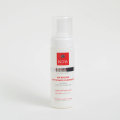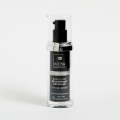The Effects of Sun Exposure on Skin Regeneration: Understand and Protect Your Skin
A Paradox: Warmth, Light... and Invisible Damage
The sun is a source of vitality and well-being. Yet, its effects on skin regeneration are often underestimated. Regular exposure causes a series of invisible micro-aggressions that disrupt the skin’s natural balance.
Dryness, dehydrated skin, loss of elasticity, appearance of fine lines or spots: all signs of a weakened biological process. Understanding these mechanisms is essential to maintain radiant skin and prevent early signs of aging.
The Sun and the Skin Regeneration Cycle
Skin naturally renews itself approximately every 28 days. This skin regeneration process relies on regular cell division and the production of structural proteins (collagen, elastin).
Excessive sun exposure disrupts this cycle:
- UVB rays cause direct DNA damage and slow down cell multiplication.
- UVA rays, which penetrate deeper, degrade collagen and elastin, reducing skin firmness and elasticity.
- Radiation triggers oxidative stress, generating free radicals responsible for inflammation, pigmentation spots, and premature aging.
Result: the skin regenerates more slowly, becomes fragile, dry, and dehydrated.
Sun, Dehydration, and Early Signs of Aging
Sun exposure increases transepidermal water loss (TEWL), which enhances the feeling of dry, tight skin. This deep hydration deficit weakens the skin barrier and leads to progressive sagging:
- Lack of suppleness → loss of elasticity.
- Appearance of fine lines → early signs of aging.
- Uneven skin tone → dull skin, marked with spots.
These phenomena are worsened by external factors like pollution, which amplifies the sun's effects by generating more free radicals.
Can Sun-Damaged Skin Be Repaired?
The good news: the skin has an incredible capacity for repair, provided it receives the right resources. Modern dermocosmetic approaches rely on three essential pillars:
- Intense hydration
→ through molecules like hyaluronic acid, which can retain up to 1000 times their weight in water. - Stimulation of skin regeneration
→ with repairing actives (allantoin, panthenol, peptides) that accelerate healing of micro-lesions. - Antioxidant protection
→ with vitamins (C, E), polyphenols, and natural ingredients that neutralize free radicals and soothe inflammation.
By combining these pillars, it’s possible to restore skin firmness, elasticity, and radiance after summer and delay the appearance of aging signs.
A Preventive and Regenerative Approach
Beyond simple sun protection, post-exposure skin care requires a specific routine:
- Gently cleanse to remove sunscreen and pollutants.
- Apply an intense hydrating serum or repairing treatment to rebalance the hydrolipidic film.
- Include a natural anti-aging product rich in antioxidants to reactivate defense mechanisms.
Discover My Regenerating & Repairing Elixir
Sun and Regeneration, a Delicate Balance
The effects of the sun on skin regeneration are numerous and often invisible in the short term. But behind the tan lie imbalances: dryness, loss of elasticity, early signs of aging.
Adopting a deep hydration and repair routine is essential to maintain strong, firm, and radiant skin. The future of dermocosmetics lies in treatments that not only protect but also repair and regenerate skin damaged by sun and pollution.




